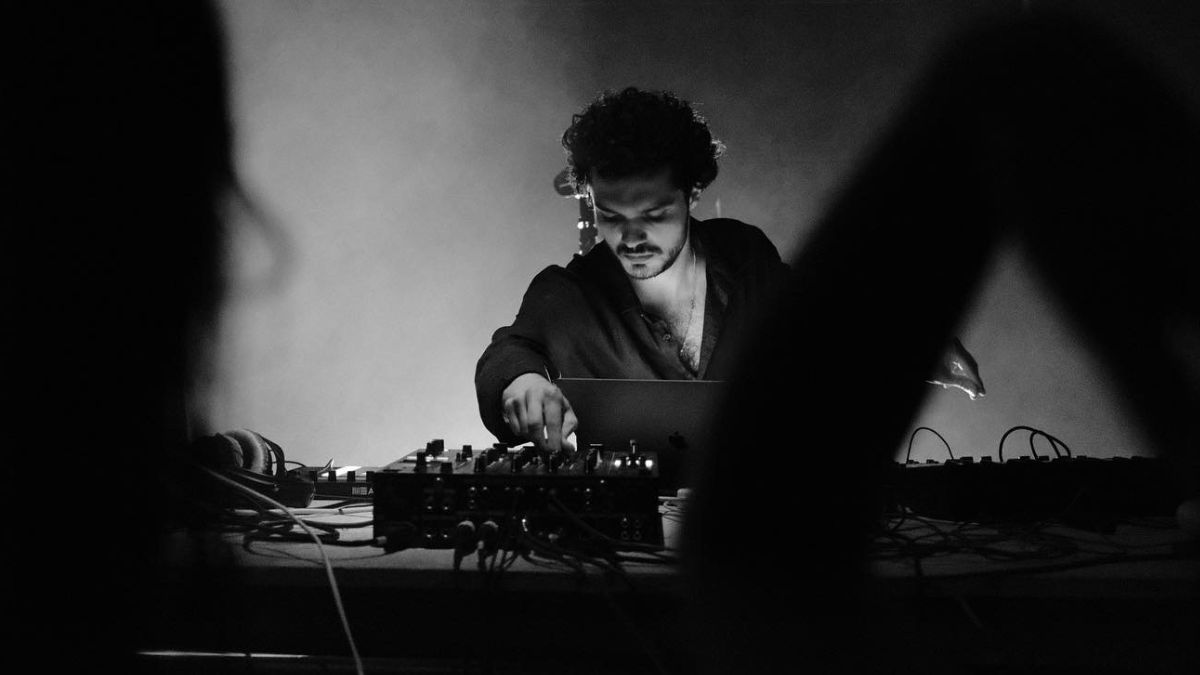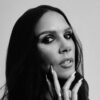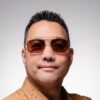Renowned Armenian musician Daao unveils a captivating blend of European Jazz and old-school electronic groove on new album, HOME, encouraging unity and collaboration amidst diverse beliefs.
Daao is an acclaimed Armenian musician known for its boundary-pushing compositions that blend diverse musical styles. With a unique fusion of European jazz elements and old-school electronic grooves, he captivates audiences with his distinctive soundscapes, drawing inspiration from his Armenian heritage and aiming to inspire unity, understanding, and collaboration through the power of music.
Connect with Daao on Soundcloud | Instagram
His new album is HOME. With an ingenious fusion of European jazz elements and an old-school electronic 808-sounding groove, this extraordinary, evocative LP aims to inspire people worldwide to work, educate, and help each other more intensively, transcending the barriers of differing beliefs.
With the album out now, we caught up with Daao to discover the inspirations behind this latest musical project.
Thanks for talking to us today – how’s the year been treating you so far?
Hey, It’s been a weirdly intense but at the same time year full of interesting adventures and achievements. I managed to travel to a lot of places and finish an album and a couple more tracks, and started to direct some collaborations and shoot videos for them which opened for me a new world of mixing music with visual storytelling and design. So in a couple of words, it is a great year.
First of all, we want to get to know you “from the beginning”. How did your history with music begin?
My musical journey began in my early years, attending a music school with a strict post-soviet curriculum. To be frank, it wasn’t a program I particularly enjoyed. However, it was during this period that I discovered the enchanting compositions of Claude Debussy, Aram Khachatryan, Erik Satie, Ennio Morricone, and Arno Babajanyan. These experiences, combined with the jazz influences from my grandfather’s mixtapes featuring artists like Miles Davis and Charlie Parker, shaped my musical understanding. This awareness of music laid dormant within me for many years until, almost 13 years later, I began to fully explore and understand its depth and impact on my creativity.
Despite my love for these works, my piano teacher always insisted that I follow the school’s set curriculum. She wouldn’t let me explore beyond what was in the program. Over time, this conflict between my growing musical interests and the strict school program made me less excited about music. I began to lose the joy I used to feel when playing the piano, and eventually, I left the school and lost interest in music for a while. Which I think I am happy about.
Reflecting back, I now consider it one of the best decisions I’ve ever made. A decade later, having matured enough to appreciate movies, design, and music, I embarked on my own creative journey as a musician and not only. After trying out several pseudonyms, I finally settled on the name “daao”.
In your own words, please can you talk us through some of the central themes of your album HOME…
I guess home was a way to express a universal feeling which I think Humanity and especially my generation is going through. And I think it started to bottle up in 2019 and especially for Armenians because Covid struggles got mixed with our ongoing war and these two events made us and our youth look at things from a very raw perspective. We understood that we are the only savers of our culture and we started to develop a strong personality of doers, accomplishers, and people who actually want to craft their own ground.
“HOME”. It is about all the possible concepts of home, the feeling, the place, the process, and all the other possible things which our complex brain can come up with. During my travels, I started to question a lot about what the actual fuck home is? And why do you feel good and comforted in a place you know better and in other places when you stay longer you start to be sick I mean homesick. And what if suddenly you lose that feeling of Home? Will you always be sick? That sounds scary and it is because at some point I suddenly lost the sense of home and it was scary! But it opened doors for me and gave me a new way to look and feel it.
And now I think that Home is a big journey which goes like this: you first learn to walk then you enjoy it a bit. Then you should lose it to find out that home is all the things all the time altogether, then understand that you’re a small particle inside of it and then accept your smallness and start to build your small home which will protect you and where you will eventually start to enjoy it again. But I think struggle and acceptance is the key to this process.
Eventually: Home is a collection of sounds, visuals, ideas, people, smells & shapes fueled by pure emotions and crafted carefully during the days of exploration from which you can expect nothing but kids who play, collaborate and learn through discovery to pass it to the next lucky time travelers who will experience life.
There’s a real mix of styles on there, but jazz is definitely prominent – are you classically trained in any instruments?
As I’ve mentioned I was attending piano classes for 5 years but by that time I really started not to approach things too seriously and started to just experiment with every instrument available I am not good at any of them but I can use them. However, I think the reason why the album ended up being a collection of compositions made up of elements of various genres and styles is because of my diverse musical perception which started to be developed from my grandfather’s jazz mixtapes. Later I discovered hip-hop, psychedelic rock, acid jazz, funk, house, and experimental avant-garde music and I can tell that for the last 4 years I am heavily listening to everything and a lot and I think that “HOME” is some kind of a burst of all that sound knowledge I managed to digest for so many years.
How did you go about blending the instruments with the more electronically-leaning beats? Were there any other artists you looked to for inspiration?
So the reason I started to play live electronic music was that I couldn’t really find those grooves and combinations of sounds I was looking for and during that period I developed a habit of not playing the low-end sounds in the most expected positions which I still dig and get truly weird not-linear grooves and as I really love 808s, 909s etc and the jazz percussions. By the time those 3 things started to merge with each other and I got the rhythm I truly love. The next important thing is that I admire Rhodes and my love for Rhodes started when I first heard “Riders on the Storm” by “The Doors” and I almost always use Rhodes to get started. Also, I got inspired a lot by legendary people such as Miles Davis, John Abercrombie, Ray Manzarek, Isaac Hayes, Duke Pearson, Moussa Doumbia, Penny Goodwin, Ronnie Foster, Jimi Hendrix, A Trible Called Quest, Brian Bennett, and many more. So I guess the combination of those 6 things led me to mix instruments with electronic beats.
There are many collaborations on the album – was that a key part of the process, considering the album’s themes?
So my goal with this album was to highlight that people with different perceptions about life and music and design can still find a way to work with each other toward a goal. And I wanted to show people that these small collaborations can be a way of crafting that “HOME” I was talking about.
What are some of the core factors of traditional Armenian music, and how did you integrate these into the tracks on HOME?
The music of Armenia is characterized by a unique blend of indigenous sounds and outside influences, reflecting the country’s position at the crossroads of different civilizations. The early Armenian music was primarily liturgical, deeply embedded in the worship practices of the Armenian Apostolic Church. The Armenian “khaz” notation system, used between the 8th and 18th centuries, recorded this sacred music.
By the 19th century, Armenian folk music became increasingly recognized as it depicted the stories, traditions, and everyday life of the Armenian people. Notable instruments in Armenian music include the duduk, a woodwind instrument, the zurna, a wind instrument, and the dhol, a double-headed drum. The melodies and harmonies used are often characteristic of the Middle Eastern maqam modal system.
While the “HOME” album may not overtly incorporate traditional Armenian music elements, its essence lies in the subconscious imprint of my roots. My experiences growing up in Yerevan, navigating its culture and rhythms, are deeply ingrained in my creative fabric. “HOME” is a modern interpretation of my cultural heritage and an intimate reflection of my personal journey. In essence, “HOME” is an integration of my Armenian heritage expressed not through traditional forms, but through a personalized contemporary lens. It embodies the spirit of my homeland, reflecting both my tangible experiences and the profound emotional undertones that come with belonging to a rich cultural tapestry such as ours.
What does your current studio set up look like? Lots of hardware, or are you mainly ‘out of the box’ type producers?
As I travel a lot I try to keep everything as mobile as possible so I have the most essential things only. My soundcards, microphones, recorders, midi instruments, drum machine, and headphones. Also, I discovered that less instruments I have the more I can push the limits and it is kind of a neverending struggle of finding that balance between your skills, the music you want to create, the music you want to perform, and your mobility. So I guess ‘out of the box’.
Other than the album, what should we be looking out for from you in the next few months?
I have a couple of releases planned soon, which will definitely be out before the end of 2023. Also as I mentioned I started to direct, design, and manage stuff and do various collaborations with different people with different backgrounds and in different scenes. In this context recently I designed my first piece of clothing which is a t-shirt and directed a small story about why I did that. And it is a collaboration with a local streetwear concept store called about:blank.
Soon I have a collaborative project with a film lab called Box Photo Lab and we are making a disposable film camera together. The list goes on.
What is the best advice you ever received as an artist?
It was really simple advice but It makes sense in so many ways. The advice was “Have fun, be honest”.
Thank you.





